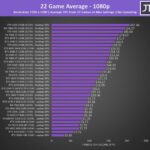Analyzing marketing performance across various social media platforms can be challenging. Each platform offers unique metrics, making direct comparisons difficult. This article explores effective strategies for comparing metrics from different platforms to gain actionable insights and optimize your marketing efforts.
Understanding the Nuances of Platform Metrics
Different social media platforms cater to diverse user behaviors and demographics. Consequently, the metrics offered by each platform reflect these differences. For example, a “like” on Facebook might not hold the same weight as a “retweet” on Twitter in terms of audience engagement and reach. A “view” on YouTube has different implications than a “view” on Instagram Reels. Recognizing these nuances is crucial for accurate cross-platform comparison.
Establishing a Standardized Comparison Framework
To effectively compare metrics, a standardized framework is essential. This involves:
- Identifying Key Performance Indicators (KPIs): Define the core metrics that align with your overall marketing objectives. Common KPIs include reach, engagement, website traffic, and conversions.
- Normalizing Metrics: Transform platform-specific metrics into comparable values. For instance, calculate engagement rate (engagement/reach) instead of relying solely on raw engagement numbers. This accounts for differences in audience size across platforms.
- Weighting Metrics: Assign different weights to metrics based on their importance to your goals. For example, if driving website traffic is paramount, prioritize click-through rates over likes or shares.
Utilizing Tools and Techniques for Comparison
Several tools and techniques facilitate cross-platform metric comparison:
- Spreadsheet Software: Create spreadsheets to organize and analyze data from different platforms. Calculate normalized metrics and visualize trends using charts and graphs.
- Marketing Analytics Dashboards: Utilize platforms like Google Analytics or dedicated social media management tools to aggregate data and provide comprehensive performance overviews.
- Custom Reporting: Build customized reports that focus on your specific KPIs and allow for flexible data manipulation and analysis.

Focusing on Actionable Insights
The ultimate goal of comparing metrics is to extract actionable insights. Analyze trends, identify top-performing platforms and content, and understand audience behavior across different channels. This data-driven approach enables you to:
- Optimize Content Strategy: Tailor content formats and messaging to resonate with each platform’s audience.
- Refine Resource Allocation: Invest in platforms and campaigns that deliver the highest return on investment (ROI).
- Improve Targeting and Segmentation: Refine audience targeting based on engagement and conversion data from different platforms.

Conclusion: Data-Driven Decision Making for Marketing Success
Comparing metrics from different platforms is essential for data-driven decision-making in social media marketing. By establishing a standardized framework, leveraging appropriate tools, and focusing on actionable insights, you can optimize your strategies and achieve measurable results. Remember that a holistic view of performance across all channels is crucial for maximizing your overall marketing impact.
